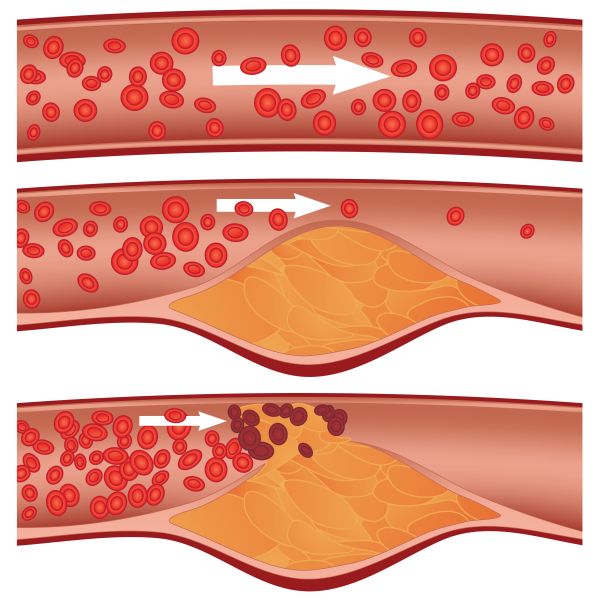GLA 與心血管健康
心血管疾病 (Cardiovascular Disease)
據世界衛生組織(WHO),心血管疾病是指心臟和血管引起的疾病,包括心臟病、動脈粥樣硬化、中風、高血壓、先天性心臟疾病,周邊動脈疾病等。心腦血管疾病的主要成因是吸煙、不健康的飲食,缺乏運動和酗酒。
據世界衛生組織(WHO),心血管疾病是指心臟和血管引起的疾病,包括心臟病、動脈粥樣硬化、中風、高血壓、先天性心臟疾病,周邊動脈疾病等。心腦血管疾病的主要成因是吸煙、不健康的飲食,缺乏運動和酗酒。
| 動脈粥樣硬化 (Atherosclerosis) 是一種常見的疾病,指的是脂肪和膽固醇(低密度脂蛋白 LDL)在動脈壁形成斑塊 (plaque),並防阻礙血液流動,增加高血壓和中風的風險。另外,慢性炎症也會導致動脈血管內的內皮退化,增加動脈粥樣硬化的風險。 GLA 與心血管健康 GLA 通過轉換為 DGLA,產生抗炎性的前列腺素 PGE1 和 15-HETrE,兩者均有良好的抗炎效果。 GLA 對心血管健康的好處包括1-5:
|
 |
按這裡了解奧米加 3 和奧米加 6 脂肪酸對心血管疾病功能的區別。
參考文獻
- Fan YY et al. Importance of dietary gamma-linolenic acid in human health and nutrition. J Nutr 1998, 128: 1411-1414.
- Li JH et al. Cardioprotective effect of liposomal prostaglandin E1 on a porcine model of myocardial infarction reperfusion no-reflow. J Zhejiang Univ Sci B 2011, 12: 638-643.
- Gupta V et al. PLGA microparticles encapsulating prostaglandin E1-hydroxypropyl-beta-cyclodextrin complex for the treatment of pulmonary arterial hypertension (PAH). Pharm Res 2011, 28: 1733-1749.
- Horrobin DF et al. How do polyunsaturated fatty acids lower plasma cholesterol levels? Lipids. Aug1983;18(8):558-62.
- Ishikawa T, et al. Effects of gammalinolenic acid on plasma lipoproteins and apolipoproteins. Atherosclerosis. Feb1989;75(2-3):95-104.

